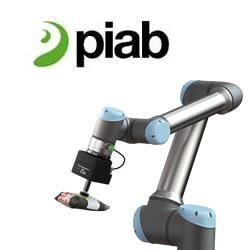A Vision for the Future: Baxter Shines in Research to Guide the Blind
Researchers at Carnegie Mellon University's TechBridgeWorld Group Use Collaborative Robot Technology to Enhance Navigation in Urban Settings
BOSTON, Aug. 25, 2015 -- For the world's 285 million people living blind or visually impaired, Rethink Robotics' Baxter Research Robot can provide an avenue to a more accessible future. Researchers at Carnegie Mellon University's TechBridgeWorld are using Baxter to explore how technology - and specifically, robots - can help the blind and visually impaired more effectively navigate urban environments.
For people with sight, the necessary tasks associated with urban living - crossing the street, sorting bus tickets or finding the right storefront - are accomplished without a second thought. Innovations using collaborative robotics can make these tasks just as easy for the blind population.
"There are examples of technology causing divides in society, but it also has the potential to build bridges and serve communities, especially people who must alter behaviors due to disabilities," said M. Bernardine Dias, founder and director of the TechBridgeWorld research group in CMU's Robotics Institute. "We're committed to help people overcome physical challenges by using the Baxter Research Robot to explore different real-life scenarios, and we've made great strides in helping the blind achieve greater levels of independence and empowerment."
CMU researchers are experimenting with Baxter for several applications, with visions of a smart city future in mind. For example, to assist blind travelers Baxter is being used to provide vocal directions reinforced with physical directional gestures on the traveler's hand. The robot can also help users select the correct bus ticket, a task that can be difficult when tickets to different destinations are physically identical in every way except for text and color. The research team is also making great inroads into multi-robot skill coordination, a scenario in which Baxter communicates with mobile robots to help guide travelers along their journeys.
"Collaborative robots like Baxter can effectively interact with humans in factories, but in the unstructured and variable urban environments that are home to millions of blind people, the complexity skyrockets," said Scott Eckert, president and CEO of Rethink Robotics. "Thanks to Baxter's open source platform, human-like form and ability to interact directly with humans, the research team at Carnegie Mellon is helping to drive social change and improve the lives of millions."
For more information, please visit www.rethinkrobotics.com.
Featured Product

The piCOBOT Electric vacuum generator
Fully electric, slim design and absence of air-tubing and cabling. The new piCOBOT® Electric heads towards another success for Piab's piCOBOT® program. A secondary effect of these achievements is the absence of entangling air tubing and cabling. It simplifies the installation, and as the new piCOBOT® Electric only needs a single connection on the cobot arm, the clean set-up allows a completely unrestricted movement. The new piCOBOT® Electric package will contain plug & play software to fit UR e-series cobots, but many other useful adaptations will be introduced in the coming year
